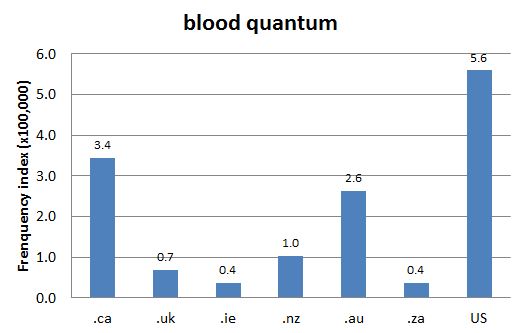DCHP-2
blood quantum blood-quantum, Blood-Quantum DCHP-2 (June 2016)
n. — First Nations, Aboriginal, Law, Adminstration
a concept that ties identity to ancestry, mainly used with respect to Aboriginal people in Canada.
Type: 6. Memorial — Widely discredited ideas about race dating from the nineteenth century linked culture and ancestry, placing the so-called "white races" from northern and western Europe at the top of a hierarchy of supposed civilization, with the "inferior races" below. The Indian Act is based on these assumptions; it made indigenous people wards of the federal government on the grounds that they supposedly required time to become civilized.
When revisions to the Indian Act contained in the 1985 Bill C-31 restored Indian status to many people who had lost it, funding to bands was not increased. Bands were encouraged to formulate their own membership rules, and some used blood quantum as a criterion (see Parliament of Canada reference); the typical percentage for membership is 50 per cent or more (see the 1987 and 1994 quotations). This concept was used to defend crowded reserves from extending services to those without the required blood quantum (see the 1994 and 1995 quotations).
As seen in Chart 1, blood quantum is used outside of Canada and is most prevalent in the US, where it has both legal status and a long history. In the US, it gained currency with specific reference to American Indians after the 1934 Indian Reorganization Act (IRA) (see ERES, s.v. "blood quantum").See also: Indian Act Bill C-31
- The concept of blood quantum has supported colonial and racist policies and practices. An outstanding goal is the development of legal and institutional practices that respect the special status of Aboriginal nations without basing this status on discredited ideas of biological difference.
References:
- ERES s.v. "Blood Quantum" Accessed 2 May 2014
- Parliament of Canada "Indian Status and Band Membership Issues" Accessed 2 May 2014
Images:
Chart 1: Internet Domain Search, 2 May 2014
